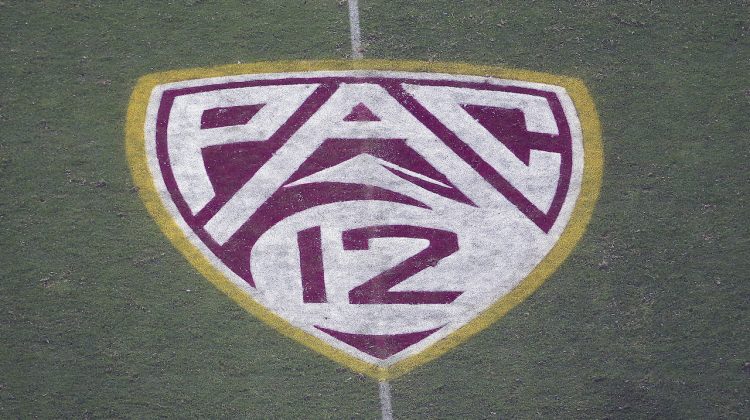If the Big 12 had a do-over, would the conference have taken a different approach and added SMU? Would taking the Mustangs off the table have further injured the Pac-12? — @d_klauser
A fascinating question without a definitive answer, at least right now. But let’s dive in, because the topic itself is instructive to the broader conversation around realignment.
First, the Big 12 could not have known in September 2021, when it added Houston, UCF, Cincinnati and Brigham Young, that the Pac-12 would lose the Los Angeles schools and fall into an existential crisis.
Additionally, it’s reasonable to be skeptical of SMU’s value given that the Big 12 already had a school (TCU) in the greater Dallas media market.
Finally, the Hotline has been told by industry sources that TCU and Baylor were against inviting SMU for competitive reasons: Why elevate an in-state school that would compete directly for eyeballs and recruits?
Although the specifics of the situations differ, SMU and BYU have comparable relationships to the Pac-12 and Big 12.
The Cougars are a better fit for the Big 12 than the Pac-12, while the Mustangs are a better fit for the Pac-12 than the Big 12 — even though their respective locations suggest it should be otherwise.
And make no mistake: SMU is a good fit for the Pac-12.
The Mustangs work as the 11th or 12th member (with San Diego State) because they open up a new market for media dollars — yes, they add value — and recruiting.
They have the academic profile necessary, and they possess the resources necessary to become relevant in football.
The Hotline has touched on this issue before, but it’s worth repeating: SMU’s status as a private school with a wealthy donor base in a fertile recruiting ground is comparable to USC’s profile.
It doesn’t have USC’s brand, of course, and probably won’t ever come close. But the Mustangs have the institutional wherewithal to become a highly competitive Power Five program. (Which they were in the 1980s, before the death penalty.)
SMU’s administration doesn’t have to answer to regents or state bureaucracy. The only thing standing between the Mustangs and a first-rate NIL collective, a huge salary pool for the football staff and elite facilities is … willpower.
Of the schools remaining in the Pac-12, only Oregon has the resources and institutional commitment to match what SMU could deliver in those crucial areas.
For those reasons, we believe SMU could be a successful, valuable football program for the Pac-12 later in the decade — a chip to use for the next round of media negotiations.
Will the Big 12 ever look back with regret? Probably not.
Will the Pac-12 be forever thankful the Mustangs were available? Quite possibly yes.
It’s widely expected that the Pac-12 will add SMU and San Diego State. Which school do you see making the quickest impact in football, and why? — @Mmarion8
Not sure there’s a clear answer. San Diego State might be better equipped to compete right now because of its recent success, current talent and veteran coaching staff. But SMU won seven games last season under rookie coach Rhett Lashlee, losing to BYU by one point in the New Mexico Bowl.
That said, SMU possesses a higher ceiling in the second half of the decade (for the reasons stated above).
The Aztecs will face many of the same obstacles that exist in the Pac-12 among the state universities, what with their limited donor bases and NIL resources.
SMU has comparatively few encumbrances.
But if Utah is the model, both schools will need several seasons to stock their rosters with enough depth to compete with Oregon, UW and Utah for top-tier finishes.
The Utes were a first-class Group of Five program (with a Hall of Fame coach) when they entered the conference in 2011 but didn’t compete for a division title until their fifth year.
Is San Diego State’s notice to the Mountain West an indication that a Pac-12 invitation is happening soon? — @WHS1969
Clearly, it’s an indication that the Aztecs hope an invitation is coming soon.
As for the reality, our view on all three components of the Pac-12 saga — that’s the media rights deal, the grant-of-rights agreement between the schools and a decision on expansion — is that the process is further along than the general public realizes.
Exactly what has been said (or hinted) in private conversations between Pac-12 commissioner George Kliavkoff or the university presidents and SDSU president Adela de la Torre, we cannot say.
Was the situation with the MW handled deftly by the Aztecs? Based on what we know at the moment, probably not.
But we suspect they have a good sense for the endgame.
Do you think the Pac-12’s media deal and expansion decision will be announced next month at football media day? That seems to be the very limit. — @Cargoman0363
No, I think they will be announced before media day.
As we discussed in this space last week, the July 21 event in Las Vegas is an unofficial but very real deadline.
The conference does not want its uncertain future to dominate the festivities at the expense of the teams, coaches and players in advance of the most anticipated season in eons.
If Colorado and Arizona leave, does the Pac-12 add San Diego State and SMU and stay at 10? Or would the conference add Tulane and Colorado State to get to 12? — @JonnyAztec33
I don’t envision that scenario unfolding, not because the Buffaloes and Wildcats are guaranteed to remain in the Pac-12 — there are no guarantees until the schools sign on the bottom line — but because of the various triggers in play.
If Colorado makes the move alone, the Pac-12 would simply slide SDSU into the void.
If Colorado and Arizona leave, that would suggest commissioner George Kliavkoff proposed a media deal below the acceptable standard. In that situation, ASU seemingly would make the move, as well — and maybe Utah, too.
In other words, the Hotline currently doesn’t foresee a scenario in which two of the Four Corners schools flee the Pac-12. It would be one, three or four.
That said, our outlook could change in the coming weeks. The situation remains fluid until the grant-of-rights deal is signed.
What is your Over/Under for the duration of the media deal and the accompanying early exit fee for the grant-of-rights? — @RockDawg3
To be clear, this is merely a guess. But the Hotline believes the media deal will either 1) last five years or 2) extend for eight years with a look-in option after four or five.
That option would allow the network partners and the schools to reassess the landscape before the Big Ten’s agreement expires in 2030.
As for the exit fee, we should assume it would follow the 12- or 24-month model.
Fans have consistently wondered about the membership’s level of commitment and whether the grant-of-rights agreement might last just a few years. Our view: If the presidents are satisfied with the media deal, they will agree to a longer commitment.
Nobody wants to go through this again anytime soon.
Everyone wants stability.
If the Pac-16 had become a reality in 2011, how many true power conferences would we have today and how many members each? — @MeezyXanadu
The Hotline loves alternate history — what if Phil Knight had attended Oregon State? — and this topic fits perfectly.
The situation cannot be judged through a present-day lens. Instead, we should attempt to guess along with then-Big Ten commissioner Jim Delany and then-SEC commissioner Mike Slive. How would they, and their TV partners, have responded in the aftermath of the Pac-12’s move to a super-conference?
It probably would have spurred Power Five consolidation in the mid-to-late 2010s. But I need to think about which schools would have landed where.
It’s a great topic to flush out at a later date.
There has been a substantial increase in the chatter about the demise of the Pac-12 recently, even if a media deal is announced. Most of the conversation is about Washington and Oregon leaving and the Pac-12 not lasting more than three or four years more years. Have you sensed a shift? — @DrewMiller61
The Hotline won’t claim to know how the saga will turn out, and there’s a reason we believe Pac-12 survival is merely a 4-point favorite over Pac-12 extinction.
But please disregard the “chatter,” which is meaningless.
The Ducks and Huskies have nowhere to go and, from a competitive standpoint, are better off with their football programs in the Pac-12 (with 10 or 12 schools) than the Big Ten (with 18 or 20 schools).
The most likely outcome remains a media rights contract that runs through the end of the decade. At that point, sure, the sport could undergo another round of upheaval that wallops the Pac-12.
The Big Ten could form a western division. Or an eastern division. Or both.
Or neither.
Do you think the Big 12 rushed into its media rights deal to try and prevent the Pac-12 from peeling off the best members? — @Soren_Dorius
The Big 12’s concern over poaching wasn’t the only factor in its decision to renew the deals with ESPN and Fox, rather than wait a year to take the media rights to market. But the security issue certainly played a role — of that, there is zero question.
As one high-level industry source told the Hotline months ago during a discussion about realignment: “Sometimes, presidents sacrifice a few dollars for stability.”
That’s doubly true when your conference has been on the brink of extinction numerous times in the past, as was the case with the Big 12 (because of Texas).
We see two things as equally true with the Big 12’s media strategy:
It made the right move under the circumstances; and it left money on the table by renewing early, in the fall of 2022, rather than waiting until the spring of 2024.
But again, security was understandably paramount.
*** Send suggestions, comments and tips (confidentiality guaranteed) to pac12hotline@bayareanewsgroup.com or call 408-920-5716
*** Follow me on Twitter: @WilnerHotline
*** Pac-12 Hotline is not endorsed or sponsored by the Pac-12 Conference, and the views expressed herein do not necessarily reflect the views of the Conference.
Related posts:

(AP Photo/Rick Scuteri)
Selection Sunday Coming Up Fast, Pac-12 Net Rankings
(AP Photo/Ralph Freso, File)
Hotline Mailbag – Breaking down Utah-Florida and Oregon-Georgia, Shaw’s job security and more
(AP Photo/Marcio Jose Sanchez)
Pac-12 Scottsdale Meetings Preview: NIL, playoff expansion, media rights
(AP Photo/Jeff Chiu)
Stock report: Pac-12 survival, options for Oregon and UW, the Big 12 as hunter, Scott’s legacy and more

